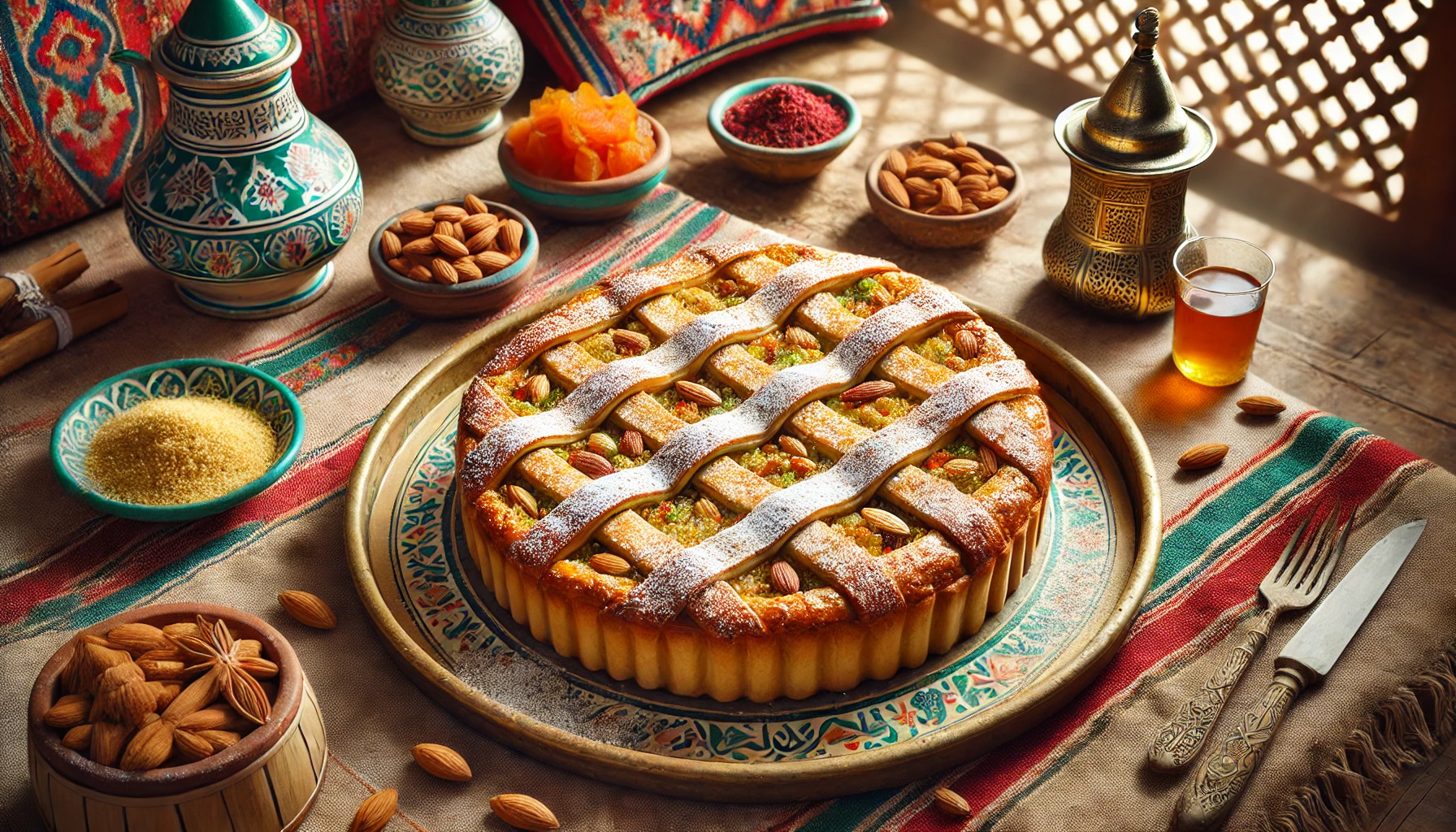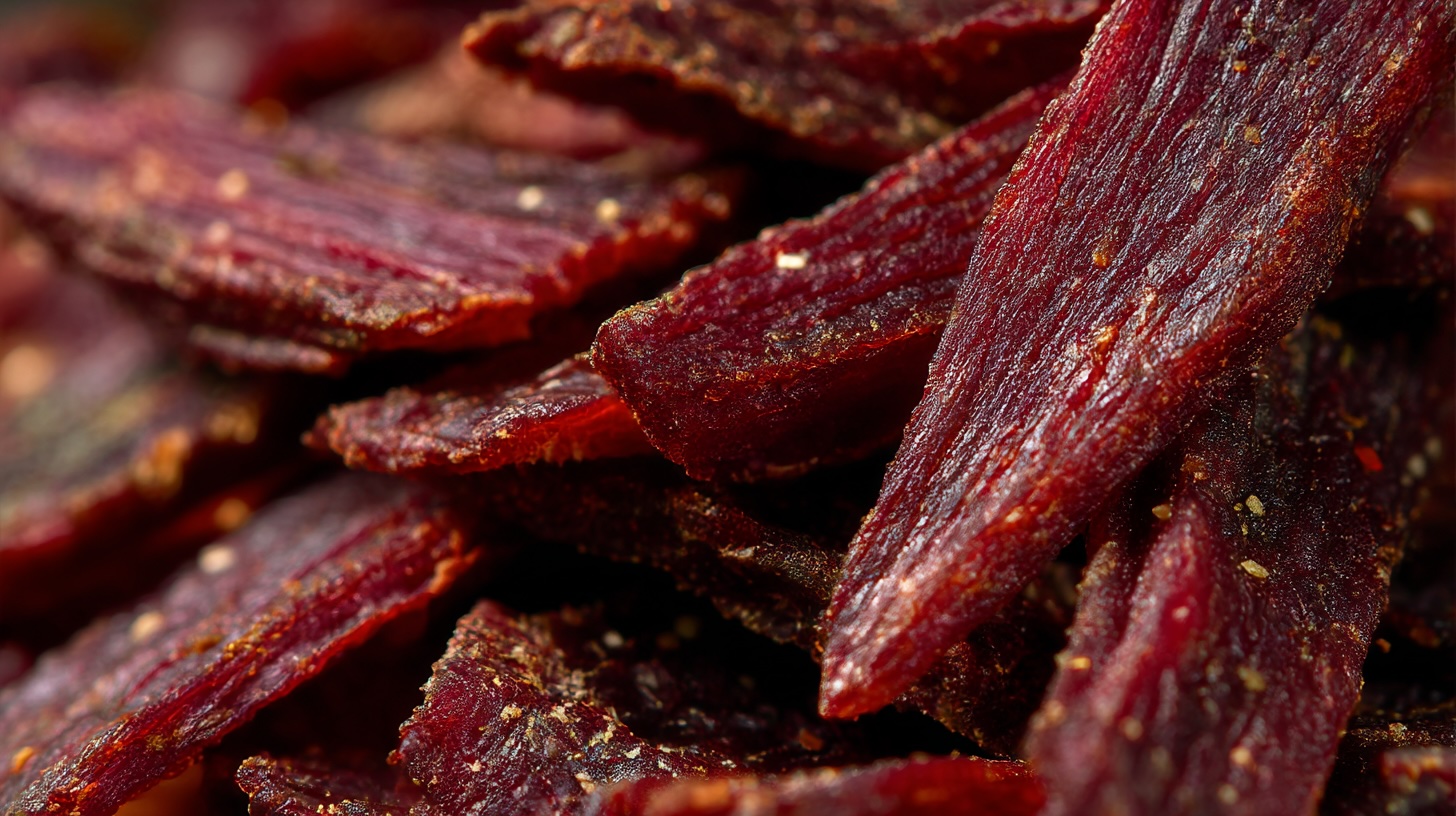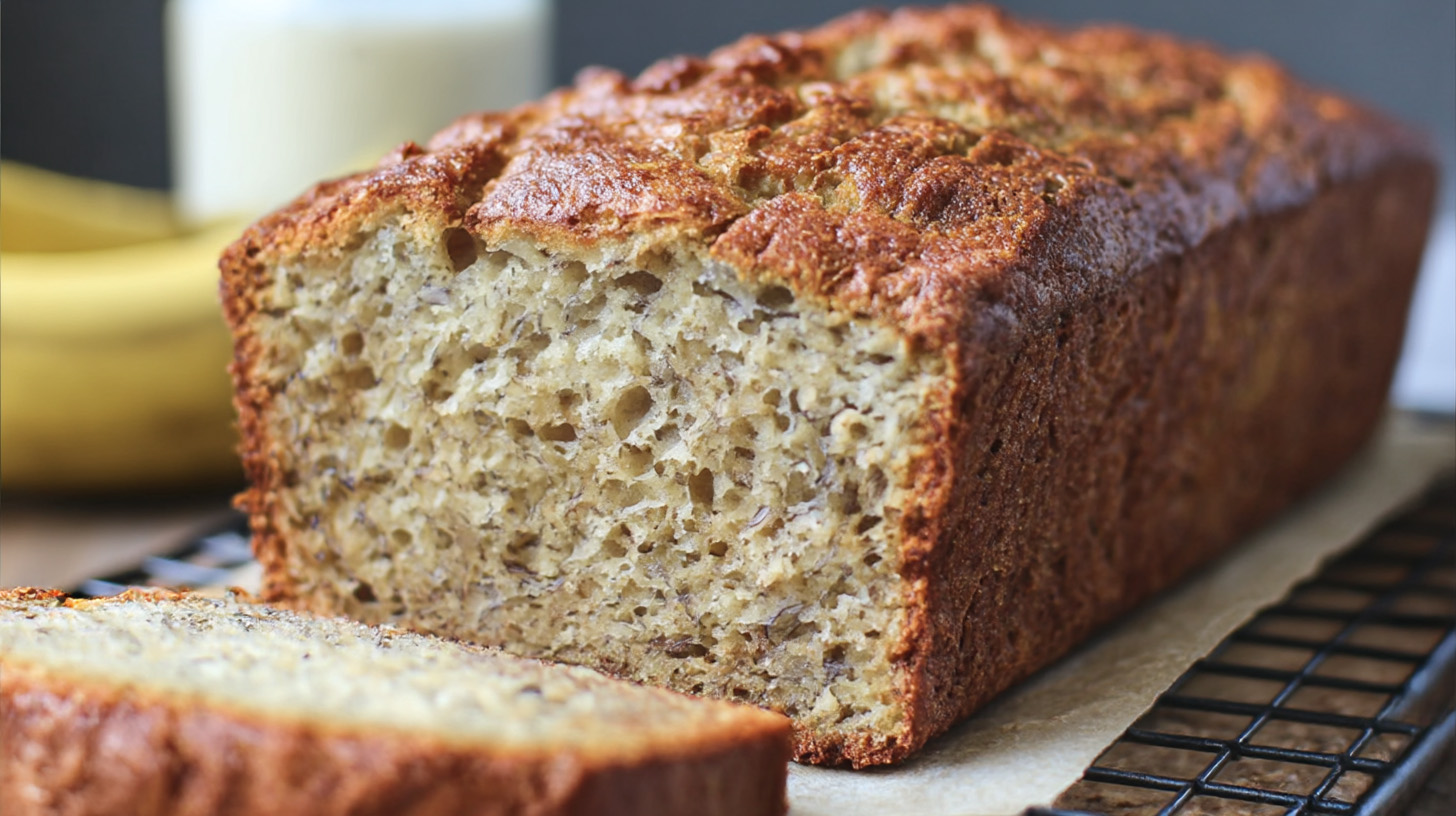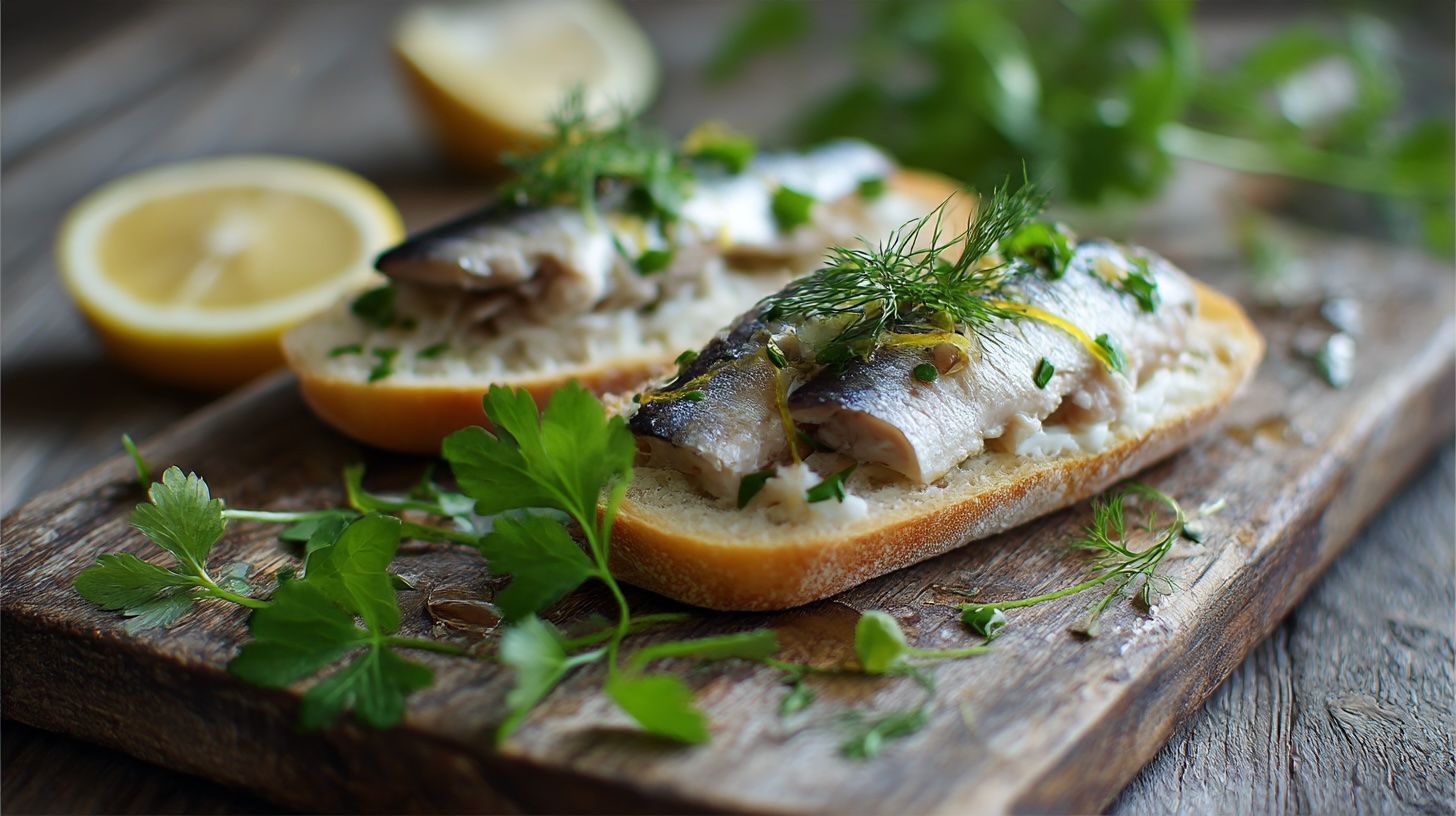Seffa Pie
Moroccan Seffa Pie is not your standard, run-of-the-mill dessert or savoury pastry. It comes from a tradition that likes to blur the boundaries between sweet and savoury, challenging preconceptions and delighting anyone adventurous enough to pick up a fork. Think of it as the culinary equivalent of that friend who always manages to bring two unlikely groups of people together at a party, and somehow, it just works.
To understand this dish, imagine a fragrant pile of steamed vermicelli or couscous, piled high and layered with almonds, raisins, cinnamon, and a generous dusting of icing sugar. Normally, Moroccan seffa is served as a towering mound of sweet and aromatic vermicelli, often served alongside a savoury meat stew. Now, shift that concept ever so slightly: tuck that mound inside a flaky pastry crust, letting the buttery layers cradle all that fluffy goodness within. Voilà: Moroccan Seffa Pie. It’s an idea that might raise an eyebrow at first, but once you taste it, your eyebrow quickly returns to its neutral position, and you find yourself nodding approvingly.
This pie is about balance. The sweetness isn’t cloying, and the savoury notes aren’t too heavy. The use of cinnamon, saffron, and orange blossom water conjures up that unmistakable North African perfume, turning your kitchen into a small outpost of a Marrakech souk. Biting into Moroccan Seffa Pie might cause flashbacks of wandering through narrow medina alleys, or if you haven’t been, it might make you long to book a flight immediately. It’s comfort food, but comfort food with an exotic flair that makes a regular Sunday roast look timid in comparison.
Morocco’s Culinary Landscape and the Place of Seffa
Moroccan cuisine has always excelled at mixing flavours and textures, especially with grains. Couscous, vermicelli, and other forms of wheat have long been staples, carefully prepared and often served with stews, slow-cooked meats, or as part of elaborate feasts. Seffa traditionally appears at weddings, special dinners, and family gatherings. It can be made with fine vermicelli noodles or lightly steamed couscous and is often served as a sweet and savoury mountain: a base that might hide slow-braised chicken or lamb underneath and a sugary, almond-strewn topping above.
Seffa itself encapsulates the Moroccan love affair with spices and sweet-savoury pairings. Cinnamon and sugar frequently appear alongside meats and grains, challenging the Western notion that sugar belongs in desserts and salt belongs in mains. In Morocco, lines blur, and that’s what makes dishes like Seffa so intriguing.
Where Moroccan Seffa Pie fits in is a sort of playful twist on this tradition. Why not enclose that seffa in a buttery pastry crust and create something that feels like a pie, yet remains distinctly Moroccan at heart? It’s the kind of dish that might appear in a modern Moroccan café catering to tourists or at a home dinner party where the host wants to surprise guests with something new. You get the core elements of seffa—its fluffiness, fragrance, and gentle sweetness—married to the comforting crispness of pastry. If that’s not culinary diplomacy, what is?
The Allure of Sweet and Savoury in Moroccan Cuisine
Moroccans have been blending sweet and savoury for centuries, long before that salted caramel you had last week was even a distant dream. There’s a reason why tagines often contain dried fruits, why bastilla (or pastilla) balances pigeon or chicken with almonds and sugar, and why a pinch of cinnamon can appear in both your main course and your dessert. The flavour profile that emerges from these combinations is nuanced, layered, and anything but predictable.
Seffa itself often includes raisins and almonds, plus that dusting of icing sugar on top, which might sound more like a dessert. Yet it’s traditionally served between courses or even as a main dish, depending on what’s tucked underneath the pile. Moroccan Seffa Pie borrows from this ethos, existing in a state of delicious ambiguity. Is it a dessert pie or a main-course pastry that happens to be sweet? The answer is: who cares? Just enjoy it.
Origin Stories and Cultural Echoes
While the exact historical moment when Moroccan Seffa Pie emerged might be lost to time, one can trace its roots back to the long-standing traditions of seffa and pastry-making in Morocco. Consider that the Moroccan kitchen is influenced by Berber, Arab, Andalusian, and Mediterranean culinary styles, each adding its own flair. We have Berber roots that celebrate grains and simple, hearty dishes. We have Arab influences introducing complex spice blends and sweet-savoury interplay. We have the legacy of Moorish Spain bringing sophistication and delicate pastries. Combine all this, and you get a culinary environment where something like Moroccan Seffa Pie feels not only possible but inevitable.
In a way, Moroccan Seffa Pie can be seen as a cousin to bastilla, the famous Moroccan pie layered with pigeon or chicken, almonds, and icing sugar, wrapped in warqa (thin pastry). Bastilla is sweet and savoury, a festival dish often served at weddings and celebrations. Moroccan Seffa Pie might borrow that concept—enclosing complex flavours in a pastry shell—and apply it to a dish that’s already sweet and spiced. The result is something that resonates with bastilla’s grandeur while forging its own path.
Famous Fans and Culinary Ambassadors
Has anyone famous declared their love for Moroccan Seffa Pie? Given that it’s relatively niche compared to globally known dishes like couscous or tagine, you’re unlikely to find celebrity chefs name-dropping it in their memoirs. But let’s consider that Morocco has hosted countless famous visitors: writers, actors, musicians, and politicians who found inspiration in the country’s spice-laden markets and glorious culinary traditions.
If we imagine the famed American writer Paul Bowles or iconic designer Yves Saint Laurent—both of whom spent significant time in Morocco—tasting Moroccan Seffa Pie, it’s easy to assume they would have appreciated it. Bowles, known for his affinity for Moroccan culture, would likely have savoured the dish’s complexity, layering it in his mind as a metaphor for the cultural blends he encountered. Saint Laurent, who famously restored the Majorelle Garden in Marrakech, might have admired the pie’s aesthetic: golden pastry, white icing sugar, and a beautiful mound of vermicelli. While we may not have documented proof of their enjoyment, the story is more fun if we assume they would have loved it.
As for the Moroccan royal family, given their role as cultural custodians, it’s possible that versions of seffa appear at royal banquets. If someone decided to present Moroccan Seffa Pie at a modern feast, it could well become a regal hit. The Moroccan culinary tradition is, after all, part of the country’s rich heritage, and there’s a longstanding appreciation for dishes that cleverly combine textures and flavours.
Choosing the Perfect Vermicelli and Ingredients
One of the joys of making Moroccan Seffa Pie is that it invites careful ingredient selection. Vermicelli used in seffa is typically very fine, often steamed multiple times to achieve a fluffy, tender texture. If you can find authentic Moroccan vermicelli (chaariya), go for it. Otherwise, angel hair pasta might stand in, though it won’t be identical. The key is to steam it rather than simply boiling, allowing the grains or strands to absorb moisture gradually and maintain a light, airy consistency.
Saffron threads might be involved, lending that subtle earthy aroma and a golden hue. Cinnamon is non-negotiable—its warm perfume is essential to the character of the dish. Raisins, plumped up and sweet, can add bursts of sugary delight, while toasted almonds provide crunch. Orange blossom water or rose water can add a floral note, giving the pie a gentle perfume reminiscent of a Moroccan spice shop or a garden at dusk.
For the pastry, a traditional approach might involve warqa or filo, but puff pastry or shortcrust can also work if you adapt the method. The pastry should be crisp enough to add textural contrast, but not so heavy that it overpowers the delicate filling. You want that moment of breaking through the crust to feel like peeling away a protective shell, revealing the fluffy, fragrant core inside.
Drinks to Enjoy with Moroccan Seffa Pie
Pairing Moroccan Seffa Pie with the right beverage can enhance the experience. Mint tea, the national drink of Morocco, is a natural choice. Its fresh mintiness and slight bitterness cut through the sweetness, resetting the palate after each bite. Another option is a spiced coffee—perhaps coffee infused with cardamom. The coffee’s richness and aromatic complexity would cosy up nicely to the dessert’s flavours.
For those who prefer something cooler, a glass of almond milk, lightly sweetened and scented with orange blossom water, might feel like a dessert duet. Or, if you’re feeling a bit mischievous, consider a small glass of sweet wine or even a fruity dessert wine. While not traditional in a Moroccan setting, it could be a fusion pairing that matches the fusion nature of the dish itself.
The key is balance. Moroccan Seffa Pie is already layered with complex flavours, so the beverage should complement, not compete. Mint tea remains the safest and most culturally resonant option, but feel free to explore. After all, this dish invites experimentation.
Variations and Personal Twists
Moroccan Seffa Pie is flexible enough to welcome personal touches. Some might prefer to use couscous instead of vermicelli, creating a slightly different texture. Others might incorporate dried apricots or figs for a more intense fruit sweetness. Pistachios can stand in for almonds, adding a subtle green colour and a luxurious crunch. A drizzle of honey might replace some of the sugar, lending a floral, earthy sweetness.
Spices can also vary. While cinnamon is essential, a pinch of ground ginger or a whisper of nutmeg can add complexity. If you want a bold move, try sprinkling a hint of ras el hanout, the famous Moroccan spice blend, inside the filling. It might be unconventional, but it could also reveal new facets of flavour that surprise and delight.
If you prefer a more pronounced savoury twist, consider tucking a layer of shredded chicken—lightly flavoured with saffron and onion—at the bottom of the pie, mimicking the approach of bastilla. Then you’d have a dish that combines seffa’s sweet topping with a savoury layer beneath. The pastry shell holds it all together, and every bite offers a different encounter with sweet, savoury, crispy, and fluffy textures.
When to Serve Moroccan Seffa Pie
This dish might not be something you whip up mid-week after a long day at the office, unless you’re very ambitious. It’s more suited to special occasions or at least a leisurely weekend. Consider serving it at a dinner party where you’ve already impressed your guests with a Moroccan tagine. Moroccan Seffa Pie can be the grand finale, leaving a lasting memory. It’s also a fun dish to bring to potlucks or festive gatherings, as most people won’t have tried anything quite like it.
In Morocco, special dishes are often associated with celebrations, from weddings to religious holidays. While Moroccan Seffa Pie might not have a centuries-old tradition attached to it, there’s no reason you can’t adopt it as your personal celebration dish. Birthdays, anniversaries, or just the first warm weekend of spring can be good excuses to break out the saffron and cinnamon.
Nostalgia, Comfort, and Culinary Storytelling
Part of what makes Moroccan Seffa Pie so appealing is the storytelling it invites. Food is never just food—it’s memory, culture, and connection. Think of a family gathered around a low table, sharing a meal that includes seffa. The smell of cinnamon and saffron wafts through the room, children sneak extra raisins, and grandparents reminisce about the old ways of making vermicelli by hand. Now imagine the same flavours and aromas transported into a pie. Suddenly, you have a new chapter in that culinary story, linking past and present, tradition and innovation.
For those who have travelled to Morocco, making or eating Moroccan Seffa Pie at home can trigger a pleasant pang of nostalgia. The first bite might summon memories of colourful ceramics, intricate architecture, and warm hospitality. For those who have never been, tasting this dish can ignite a curiosity about a land of deserts and coasts, mountains and medinas, and the unique flavours born of its history.
The Irony and Playfulness of the Concept
The idea of calling something a “pie” that contains sugar, cinnamon, vermicelli, almonds, and possibly even hidden meat layers might strike some as cheeky. In English-speaking countries, “pie” often suggests a specific concept: apple pie, pumpkin pie, steak and kidney pie. Moroccan Seffa Pie feels mischievous, dancing along the border between sweet and savoury, main and dessert, local tradition and global reinterpretation.
This playful quality is part of the charm. In a world where culinary boundaries sometimes feel rigidly enforced, Moroccan Seffa Pie is happy to break rules and flaunt a layered, complex identity. It challenges expectations and encourages diners to approach it with an open mind. After all, if you can accept the idea of cinnamon and sugar on a main dish, why not enclose that dish in pastry and call it a pie?
How to Make It Feel Authentic at Home
Authenticity can be a fraught concept, especially when trying to recreate global dishes. You might not have access to the same variety of vermicelli that a Moroccan cook has. Your saffron might be of different quality, and your almonds might taste slightly different. But authenticity isn’t about perfect replication; it’s about respect and effort.
Try to source good-quality spices. Freshly ground cinnamon and high-grade saffron will elevate your Moroccan Seffa Pie. Don’t rush the steaming process for your vermicelli or couscous. Give yourself time, maybe play some Gnawa music or Moroccan Andalusian tunes in the background to set the mood. If possible, serve it with Moroccan mint tea in a teapot, poured from a height to create that signature foam. These small gestures help create an immersive experience, even if your kitchen is in Birmingham or Edinburgh.
Three Detailed Recipes to Try
Classic Moroccan Seffa Pie with Vermicelli
This version sticks closely to tradition, using vermicelli as the base.
For the pastry:
• About 6 sheets of filo pastry or warqa (if you can find it)
• 100g unsalted butter, melted
For the vermicelli filling:
• 300g fine vermicelli (chaariya)
• 50g raisins, soaked in warm water until plump
• 50g blanched almonds, toasted and roughly chopped
• 2 tbsp icing sugar, plus extra for dusting
• 1 tsp ground cinnamon, plus extra for dusting
• Pinch of saffron threads steeped in 2 tbsp warm water
• 1 tbsp orange blossom water
• Pinch of salt
Steam the vermicelli: Lightly oil them and steam over simmering water for about 15-20 minutes. Remove, fluff with a fork, and sprinkle with a little salted water. Steam again for another 10-15 minutes until soft and fluffy. Add saffron water, orange blossom water, raisins, almonds, icing sugar, cinnamon, and salt. Toss gently to combine.
Assemble the pie: Butter a round baking dish. Layer 3-4 sheets of filo, brushing each with melted butter, letting the edges hang over. Fill with the vermicelli mixture, pressing lightly. Fold the overhanging filo on top, adding another sheet on top if needed, and brush with butter. Bake at 180°C until golden and crisp, about 25-30 minutes.
Dust the top with icing sugar and cinnamon in decorative stripes. Slice and serve warm with mint tea. The pastry crunch contrasts with the fluffy, fragrant vermicelli, sweet raisins, and warm spice.
Moroccan Seffa Pie with Couscous and Apricots
This variation swaps vermicelli for couscous and adds dried apricots for extra fruitiness.
For the pastry:
• 1 sheet puff pastry (all-butter if possible)
• 1 egg yolk, beaten with a splash of milk
For the couscous filling:
• 300g fine couscous
• 50g raisins
• 50g dried apricots, chopped
• 50g toasted almonds, chopped
• 2 tbsp icing sugar
• 1 tsp cinnamon
• Pinch of saffron threads in warm water
• 1 tbsp orange blossom water
• Pinch of salt
Prepare the couscous: Place couscous in a bowl, add a pinch of salt and a little oil, and fluff. Pour in just enough boiling water to cover, cover the bowl, and let stand 10 minutes. Fluff again. Steam over simmering water if you want a lighter texture, or just fluff thoroughly with a fork until tender.
Mix in saffron water, orange blossom water, raisins, apricots, almonds, icing sugar, and cinnamon. Taste and adjust sweetness.
Assemble the pie: Roll out puff pastry to fit a pie dish. Fill with the couscous mixture. Fold over edges or place another pastry layer on top if desired. Brush with egg wash. Bake at 190°C until pastry is golden and puffed, about 25-30 minutes.
Dust with icing sugar and cinnamon before serving. The puff pastry creates a rich, buttery crust that pairs beautifully with the fruity couscous.
Moroccan Seffa Pie with Chicken Layer
This recipe introduces a savoury layer of chicken beneath the sweet vermicelli, echoing bastilla’s complexity.
For the pastry:
• 6-8 sheets of filo or warqa
• 100g melted butter
For the filling:
• 300g vermicelli
• 1 chicken breast, cooked and shredded (season with a pinch of saffron, onion, salt, and a little butter)
• 50g raisins
• 50g toasted almonds, chopped
• 2 tbsp icing sugar
• 1 tsp cinnamon
• 1 tbsp orange blossom water
• Pinch of salt
Steam the vermicelli as in the classic recipe. Mix in raisins, almonds, icing sugar, cinnamon, orange blossom water, and salt. Taste and adjust. Layer the filo sheets in a buttered baking dish. Spread the shredded chicken at the bottom. Top with the vermicelli mixture. Fold over the pastry edges and add another buttered sheet on top if needed.
Bake at 180°C until the pastry is crisp and golden. Dust the top with icing sugar and cinnamon. Cutting into this pie reveals tender chicken nestled under sweet, fragrant vermicelli. This is a playful nod to bastilla, giving you savoury depth under all that sugary charm.
These three recipes show just how versatile Moroccan Seffa Pie can be. The first keeps things classic, highlighting vermicelli’s delicate texture. The second embraces couscous and dried fruit for a fruity twist. The third flirts with savoury chicken, creating a dish that straddles the line between main and dessert.
In each case, what emerges is a pie that resonates with Moroccan culinary tradition, while also feeling fresh and inventive. Moroccan Seffa Pie stands as a testament to what happens when you let imagination and cultural legacy mingle in your kitchen. It celebrates the Moroccan love of sweet-savoury balance, the patient art of steaming grains, the perfumed allure of saffron and cinnamon, and the simple joy of breaking through a pastry crust to find a world of flavour inside.




Post Comment